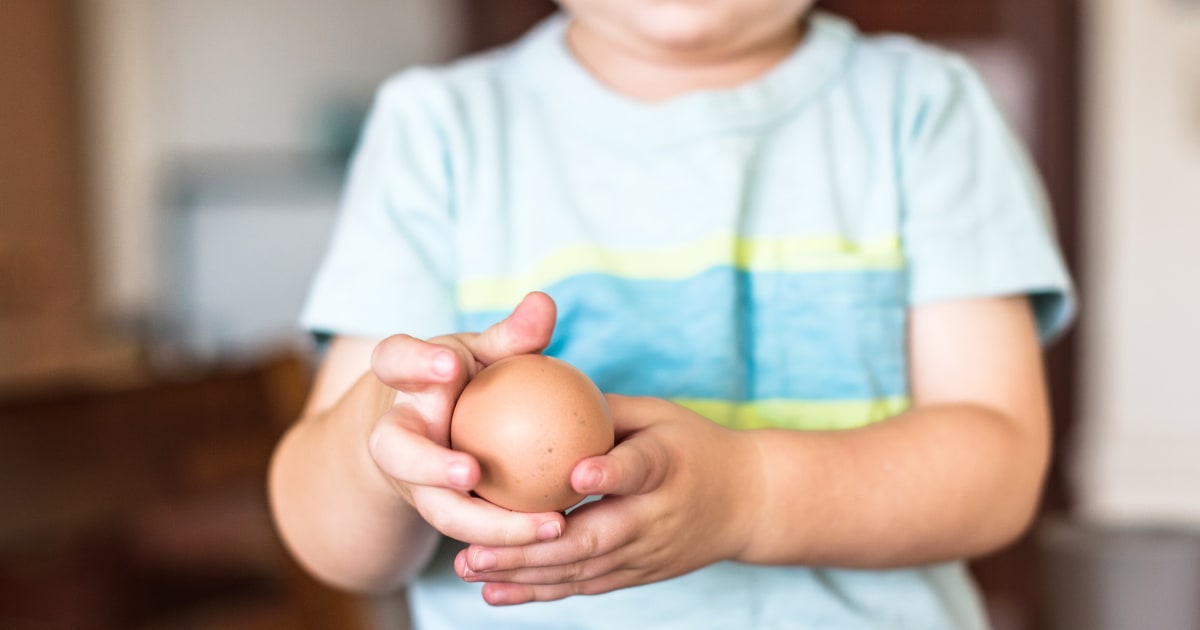
A viral prank in which parents film themselves cracking an egg on their toddlers’ heads is taking over TikTok. But some medical experts say the laughs may not be worth the potential harmful effects the stunt could have on kids.
The videos, many of which use the hashtag #eggprank, typically show a parent with a young child in the kitchen. The parent takes a raw egg and tells the child they’re going to crack it — but rather than doing so in a pan or a bowl, they crack it on the child’s head before pouring the egg into a bowl or pan.
While the reactions from the children shown vary, many are seen crying or looking upset and stunned. In some instances, the child walks away, but other kids egg the parent back. The hashtag had more than 670.7 million views as of Tuesday.
The parents most likely see it as lighthearted fun. But in the comments of the videos and in video stitches, dozens of TikTok users have expressed concern that the children shown are being hurt or humiliated.
Several medical experts told NBC News that while they don’t think the parents in the videos seem malicious, the prank could have unintended short-term effects, including bruising a child’s head or spreading germs from the egg.
“I was not a big fan of this at all. This is not something that benefits kids in any way, and I honestly don’t find it entertaining,” said Dr. Meghan Martin, a pediatric emergency medical physician at Johns Hopkins All Children’s Hospital, who also has 1.3 million followers on TikTok.
Martin added that parents should be especially wary of getting raw yolk on children’s faces.
“We’re literally smacking salmonella on their foreheads,” she said. “It’s harder to get a toddler to drink fluids when they’ve got a stomach bug or food poisoning, and so they’re more likely to end up in the hospital for IV fluids.”
It’s unclear where the prank originated. Some viral videos from earlier this month showed adults pranking other adults with the egg trend, one of which has more than 14 million views.
A spokesperson for TikTok declined to comment.
Amanda Mathers, a pediatric occupational therapist, said she wanted to know how hard the impact of the egg was — so she tried to break one on her own forehead.
“It was hard to crack that egg on my head and my fully developed skull,” she said. “And I almost felt a shock of, like, tears behind my eyes just trying to slam that egg into my head.”
But Rebecca Burger-Caplan, clinical director of child, adolescent and family services at Mount Sinai Hospital in New York, said a one-off experience like the egg prank is unlikely to have long-term ramifications.
She noted, though, that “parents may have a choice of whether to help maintain a child’s sense that they know what to expect from their parents, versus one where there’s a choice to kind of deviate from that expectation.”
Erisa Mullai, a mother of four, said that for her family, participating in the prank created a fun memory. She filmed the egg prank with her children, she said, and they now often watch the video and laugh.
“My kids’ favorite videos to ever make … is to prank my husband and I, and we love to do it back to them because we feel as parents we have to have a sense of humor,” she said, adding that it’s important that her children “don’t take life too seriously.”
Mullai said she’s gotten a mix of reactions to her video, with some saying they love it and others pushing back.
Both Martin and Mathers said they are concerned that young children could learn harmful behaviors because of the egg prank.
“These toddler brains are developing and they are like sponges, you know, so they are just taking in everything that’s happening in their environment,” Mathers said. “And to think that they’re witnessing their parents, purposely, you know, harm them … it was really shocking for me to see.”
Mullai, meanwhile, said she is not offended that some people don’t like her video or the prank itself.
“I think that if you don’t follow somebody and you see one video that you’re going to make assumptions, you know what I mean?” Mullai said. ”Because you don’t know anything more than a 30-second video.”






